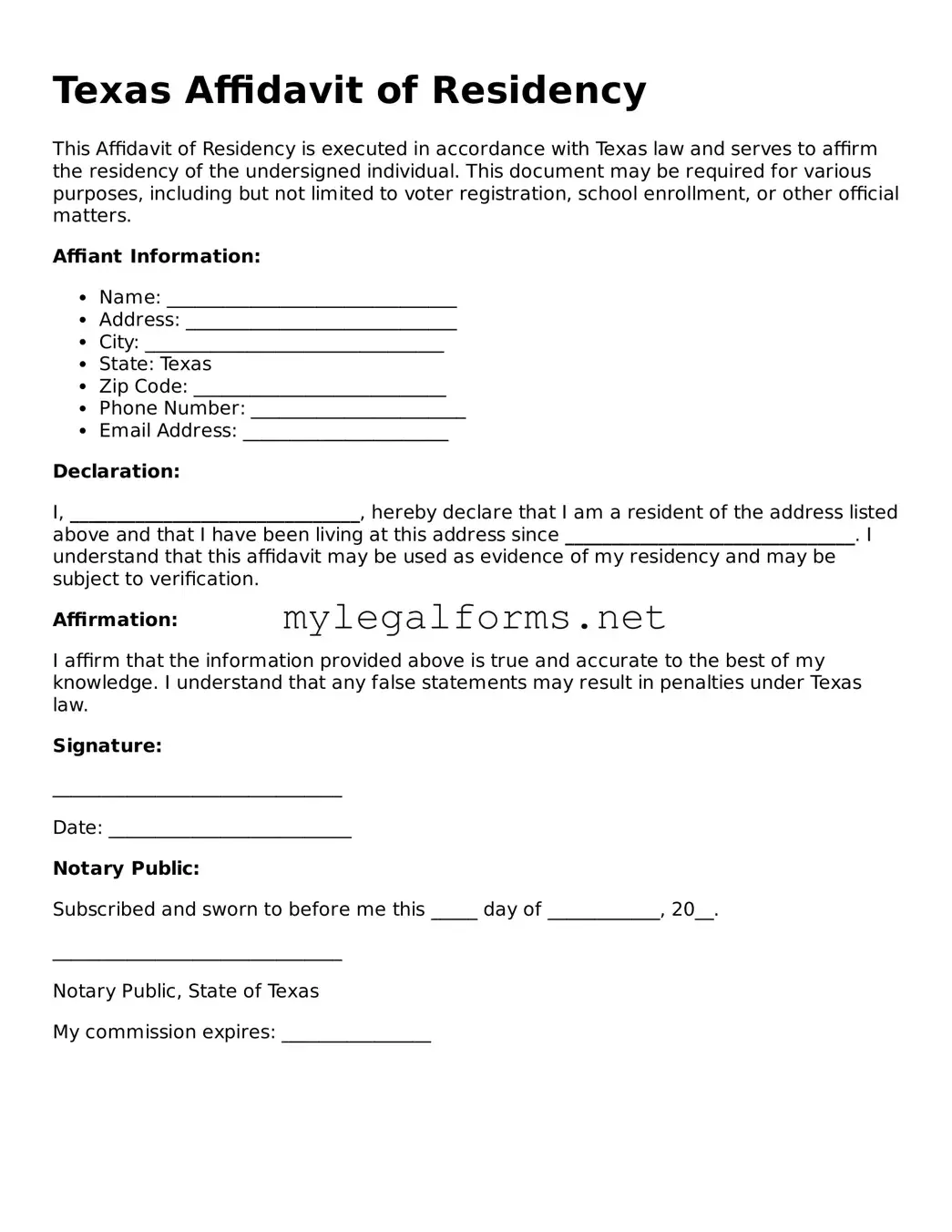Texas Affidavit of Residency
This Affidavit of Residency is executed in accordance with Texas law and serves to affirm the residency of the undersigned individual. This document may be required for various purposes, including but not limited to voter registration, school enrollment, or other official matters.
Affiant Information:
- Name: _______________________________
- Address: _____________________________
- City: ________________________________
- State: Texas
- Zip Code: ___________________________
- Phone Number: _______________________
- Email Address: ______________________
Declaration:
I, _______________________________, hereby declare that I am a resident of the address listed above and that I have been living at this address since _______________________________. I understand that this affidavit may be used as evidence of my residency and may be subject to verification.
Affirmation:
I affirm that the information provided above is true and accurate to the best of my knowledge. I understand that any false statements may result in penalties under Texas law.
Signature:
_______________________________
Date: __________________________
Notary Public:
Subscribed and sworn to before me this _____ day of ____________, 20__.
_______________________________
Notary Public, State of Texas
My commission expires: ________________
